Table of Contents
Overview – Amino Acid Metabolism
Amino acid metabolism is essential for protein synthesis, energy production, and nitrogen balance. Amino acids are derived from dietary protein or synthesised in the liver, then either used for anabolic processes or catabolised for energy. During catabolism, excess nitrogen is converted to ammonia, which is toxic, and then detoxified through the urea cycle. This process is tightly integrated with glucose and fat metabolism, and essential for cellular homeostasis.
Definition
Amino acids are organic nitrogen-containing compounds with both an amine (–NH₂) and carboxyl (–COOH) group.
- Humans require 20 amino acids
- Some are non-essential (synthesised in liver)
- Others are essential (must be obtained from diet)
Digestion and Absorption
- Dietary proteins are broken down into amino acids by digestive enzymes
- Absorbed in the small intestine, then enter the portal circulation
- Delivered to the liver, which:
- Synthesises non-essential amino acids
- Distributes amino acids to other tissues via blood
- Active transport enables cellular uptake of amino acids
Glucogenic vs Ketogenic Amino Acids
Glucogenic
- Can be converted into glucose via gluconeogenesis
- Enter the TCA cycle as intermediates (e.g. oxaloacetate, α-ketoglutarate)
Ketogenic
- Converted into Acetyl-CoA, precursor to ketone bodies
- Leucine and Lysine are exclusively ketogenic
Both Glucogenic & Ketogenic
- Phenylalanine
- Isoleucine
- Threonine
- Tryptophan
- Tyrosine

Ammonia and Nitrogen Balance
- Amino acid catabolism produces ammonia (NH₄⁺)
- Ammonia is toxic and must be rapidly converted to urea via the urea cycle
The Urea Cycle
What is it?
- A detoxification pathway converting ammonia to urea, a non-toxic compound
- Consists of four enzymatic steps:
- 1 mitochondrial reaction
- 3 cytosolic reactions
Where?
- Primarily in the liver
- Small contribution from kidneys
- Occurs in both the mitochondria and cytosol
Summary
- Converts:
- Ammonia (NH₄⁺) + Aspartate → Urea
- Energy cost: 3 ATP (→ 2 ADP + 1 AMP)
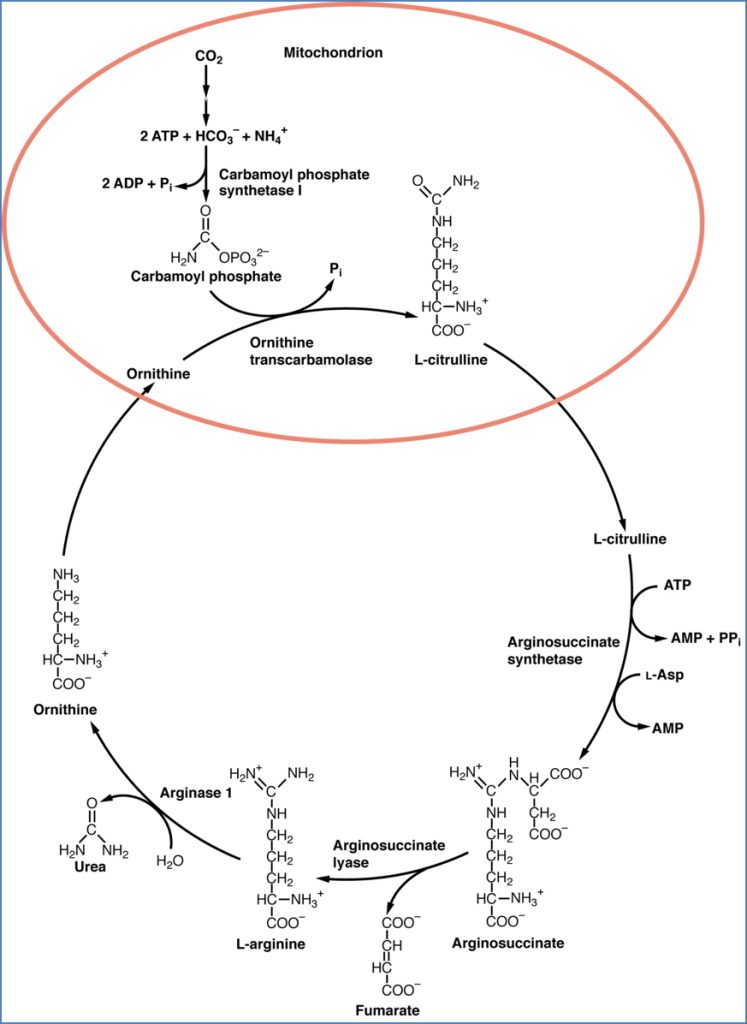
The Aspartate–Argininosuccinate Shunt
- Urea cycle and TCA cycle interact via shared intermediates
- Oxaloacetate from the TCA cycle → Aspartate (feeds urea cycle)
- Fumarate from the urea cycle → Malate (re-enters TCA cycle)
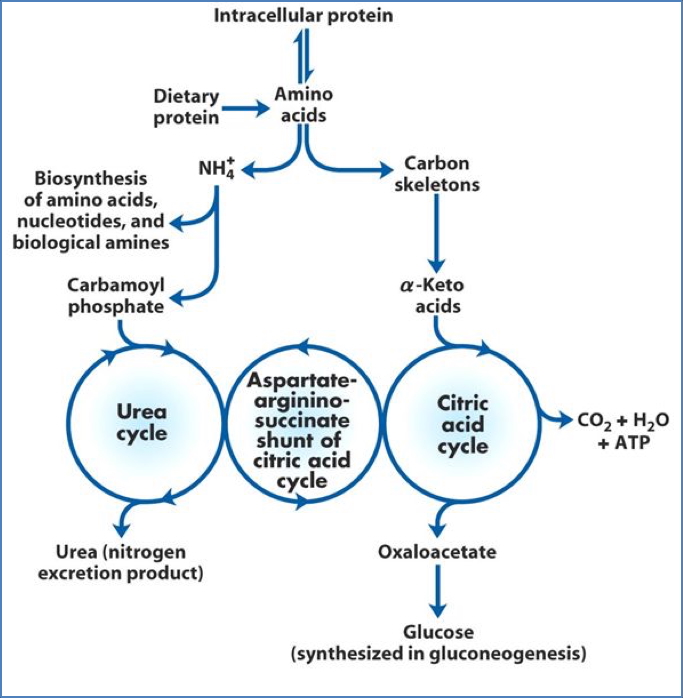
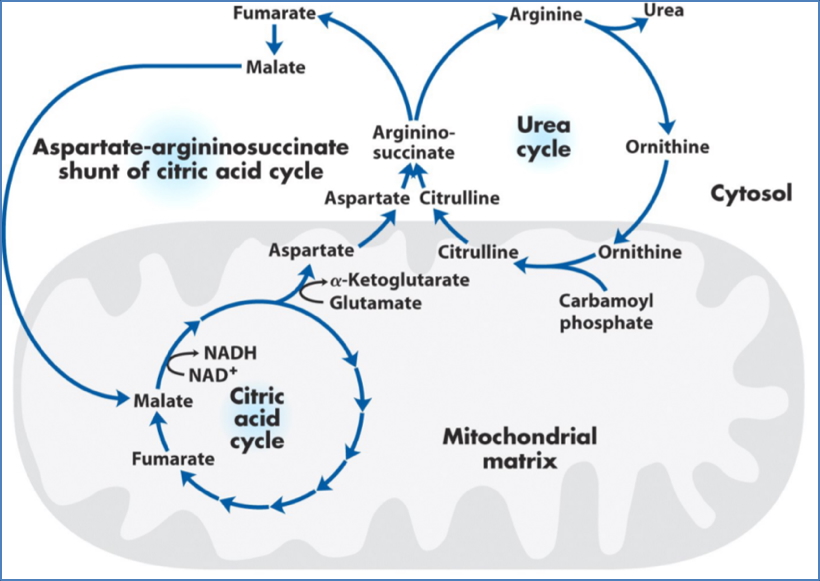
ATP Yield and Electron Transport
Amino acid metabolism ultimately contributes to ATP production via oxidative phosphorylation.
Electron Transport Chain
- NADH and FADH₂ generated from TCA-linked AA breakdown → fuel the electron transport chain
- Located in inner mitochondrial membrane
- Proton gradient drives ATP synthase → generates ATP
- Yields:
- 1 NADH → ~3 ATP
- 1 FADH₂ → ~2 ATP
- Oxygen → CO₂ + H₂O
- Final ATP yield depends on which amino acid and pathway was used
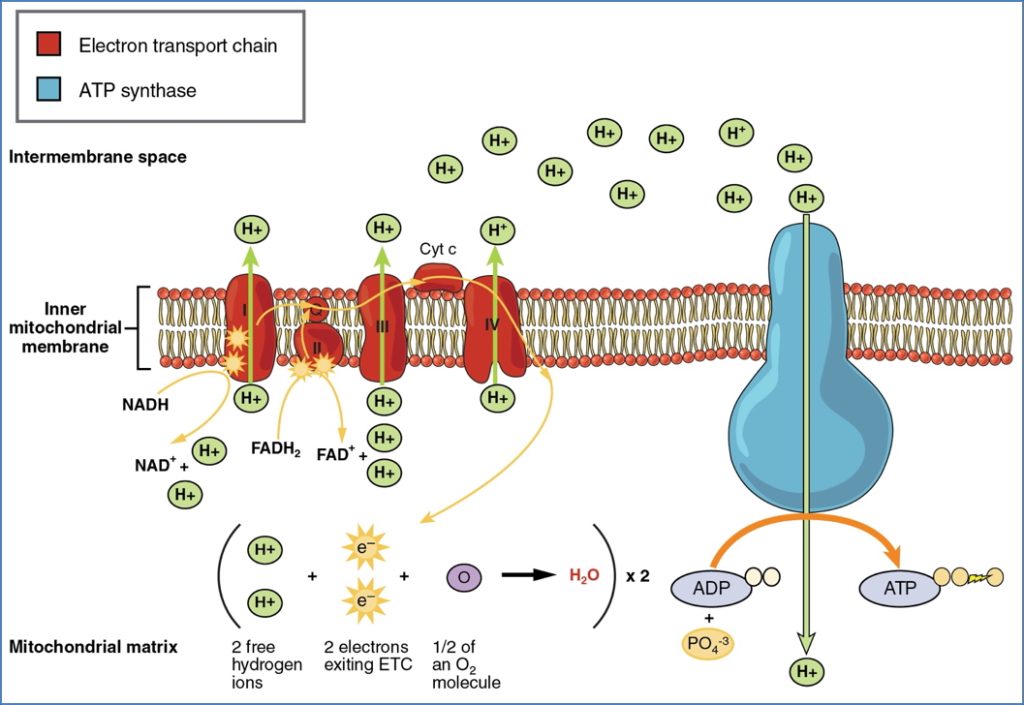
Summary – Amino Acid Metabolism
Amino acid metabolism enables cells to build proteins, generate energy, and eliminate toxic ammonia through the urea cycle. This metabolic flexibility is vital to human physiology, particularly in the liver, and supports both anabolic and catabolic processes. For a broader context, see our Cell Biology & Biochemistry Overview page.
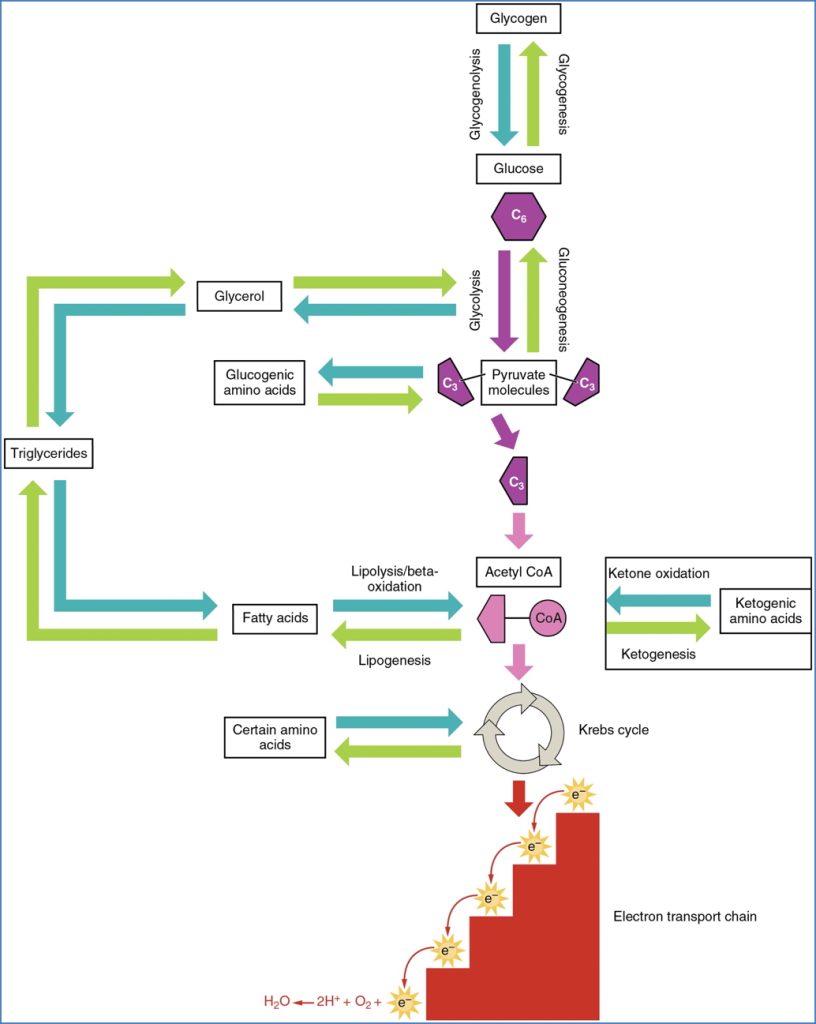
CNX OpenStax, CC BY 4.0 <https://creativecommons.org/licenses/by/4.0>, via Wikimedia Commons